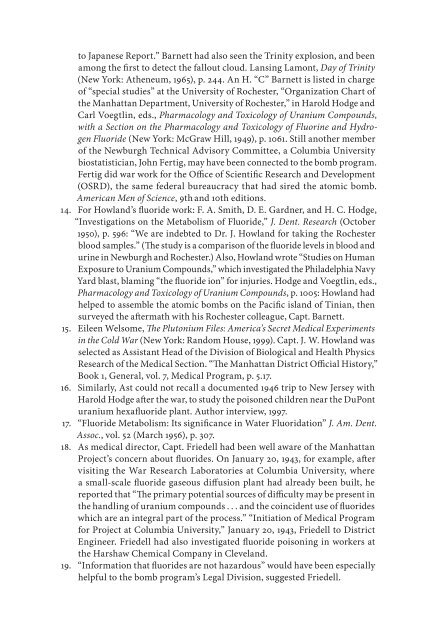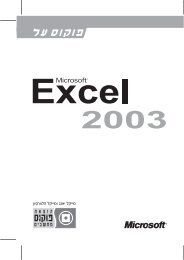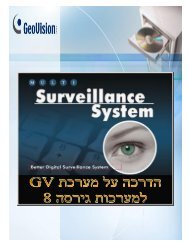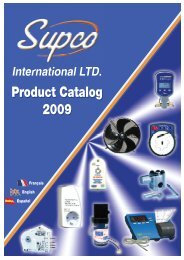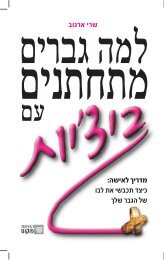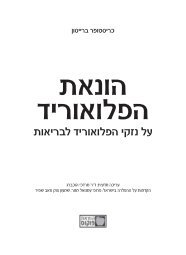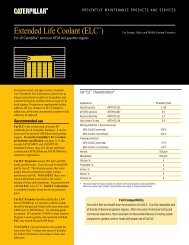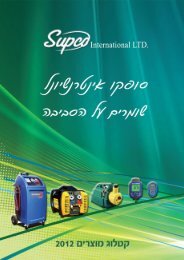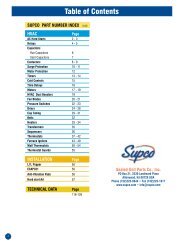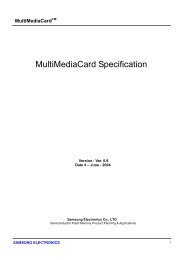Epigraphs Note on Terminology Acknowledgments Introduction
Epigraphs Note on Terminology Acknowledgments Introduction
Epigraphs Note on Terminology Acknowledgments Introduction
Create successful ePaper yourself
Turn your PDF publications into a flip-book with our unique Google optimized e-Paper software.
to Japanese Report.” Barnett had also seen the Trinity explosi<strong>on</strong>, and been<br />
am<strong>on</strong>g the first to detect the fallout cloud. Lansing Lam<strong>on</strong>t, Day of Trinity<br />
(New York: Atheneum, 1965), p. 244. An H. “C” Barnett is listed in charge<br />
of “special studies” at the University of Rochester, “Organizati<strong>on</strong> Chart of<br />
the Manhattan Department, University of Rochester,” in Harold Hodge and<br />
Carl Voegtlin, eds., Pharmacology and Toxicology of Uranium Compounds,<br />
with a Secti<strong>on</strong> <strong>on</strong> the Pharmacology and Toxicology of Fluorine and Hydrogen<br />
Fluoride (New York: McGraw Hill, 1949), p. 1061. Still another member<br />
of the Newburgh Technical Advisory Committee, a Columbia University<br />
biostatistician, John Fertig, may have been c<strong>on</strong>nected to the bomb program.<br />
Fertig did war work for the Office of Scientific Research and Development<br />
(OSRD), the same federal bureaucracy that had sired the atomic bomb.<br />
American Men of Science, 9th and 10th editi<strong>on</strong>s.<br />
14. For Howland’s fluoride work: F. A. Smith, D. E. Gardner, and H. C. Hodge,<br />
“Investigati<strong>on</strong>s <strong>on</strong> the Metabolism of Fluoride,” J. Dent. Research (October<br />
1950), p. 596: “We are indebted to Dr. J. Howland for taking the Rochester<br />
blood samples.” (The study is a comparis<strong>on</strong> of the fluoride levels in blood and<br />
urine in Newburgh and Rochester.) Also, Howland wrote “Studies <strong>on</strong> Human<br />
Exposure to Uranium Compounds,” which investigated the Philadelphia Navy<br />
Yard blast, blaming “the fluoride i<strong>on</strong>” for injuries. Hodge and Voegtlin, eds.,<br />
Pharmacology and Toxicology of Uranium Compounds, p. 1005: Howland had<br />
helped to assemble the atomic bombs <strong>on</strong> the Pacific island of Tinian, then<br />
surveyed the aftermath with his Rochester colleague, Capt. Barnett.<br />
15. Eileen Welsome, The Plut<strong>on</strong>ium Files: America’s Secret Medical Experiments<br />
in the Cold War (New York: Random House, 1999). Capt. J. W. Howland was<br />
selected as Assistant Head of the Divisi<strong>on</strong> of Biological and Health Physics<br />
Research of the Medical Secti<strong>on</strong>. “The Manhattan District Official History,”<br />
Book 1, General, vol. 7, Medical Program, p. 5.17.<br />
16. Similarly, Ast could not recall a documented 1946 trip to New Jersey with<br />
Harold Hodge after the war, to study the pois<strong>on</strong>ed children near the DuP<strong>on</strong>t<br />
uranium hexafluoride plant. Author interview, 1997.<br />
17. “Fluoride Metabolism: Its significance in Water Fluoridati<strong>on</strong>” J. Am. Dent.<br />
Assoc., vol. 52 (March 1956), p. 307.<br />
18. As medical director, Capt. Friedell had been well aware of the Manhattan<br />
Project’s c<strong>on</strong>cern about fluorides. On January 20, 1943, for example, after<br />
visiting the War Research Laboratories at Columbia University, where<br />
a small-scale fluoride gaseous diffusi<strong>on</strong> plant had already been built, he<br />
reported that “The primary potential sources of difficulty may be present in<br />
the handling of uranium compounds . . . and the coincident use of fluorides<br />
which are an integral part of the process.” “Initiati<strong>on</strong> of Medical Program<br />
for Project at Columbia University,” January 20, 1943, Friedell to District<br />
Engineer. Friedell had also investigated fluoride pois<strong>on</strong>ing in workers at<br />
the Harshaw Chemical Company in Cleveland.<br />
19. “Informati<strong>on</strong> that fluorides are not hazardous” would have been especially<br />
helpful to the bomb program’s Legal Divisi<strong>on</strong>, suggested Friedell.


